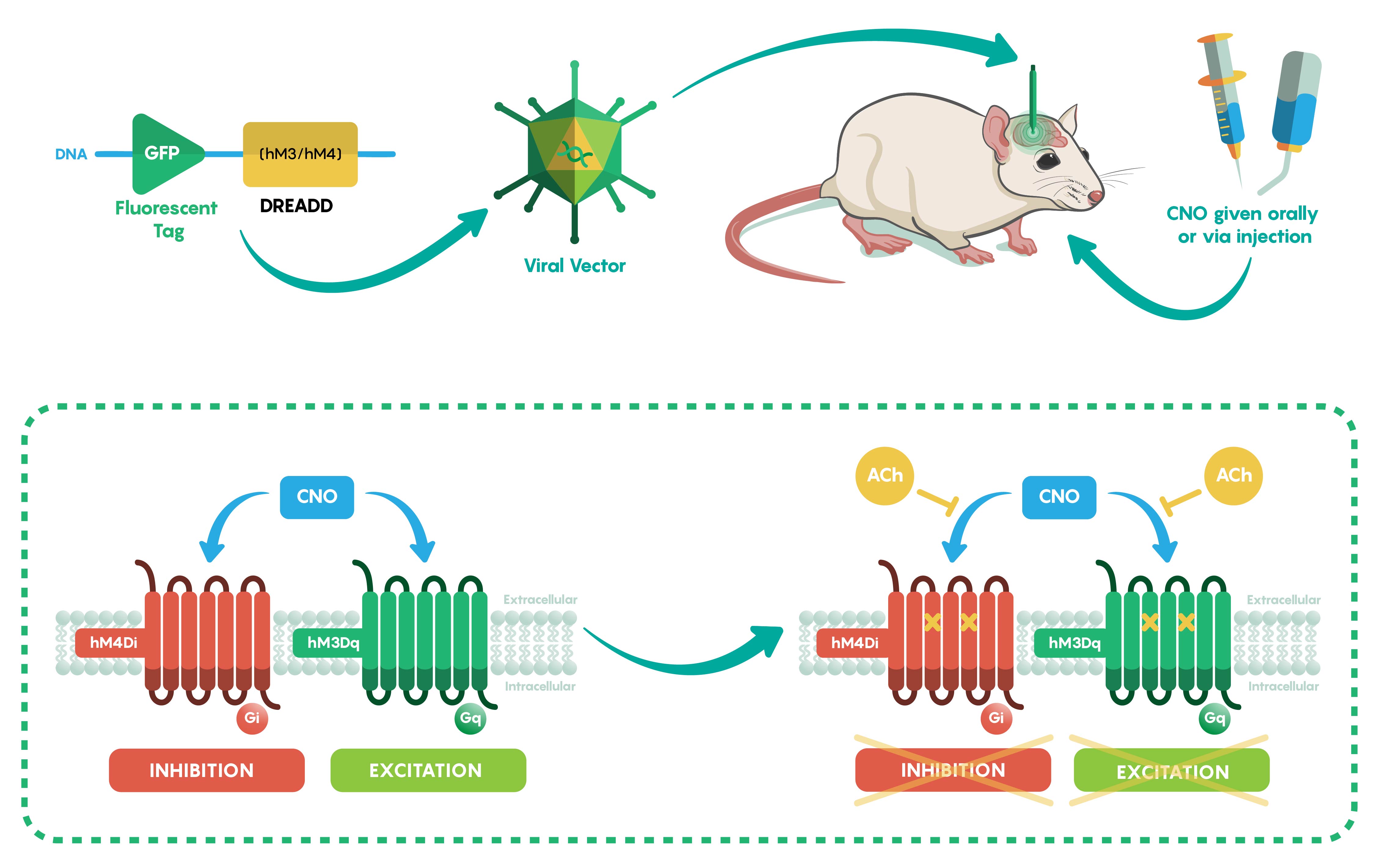Written by: Destinee Chaidez
During
Dr. Jelena Radulovic’s talk about processing stress related memories in the hippocampal
cortical circuits, she mentioned a recently developed chemogenetic technique
being implemented throughout neurological studies known as DREADD. I had heard
of optigentics before, but had no idea what this designer receptor process entailed.
Due to this growing curiosity I decided to find an article explaining what this
technique was and its utilizations.
 DREADD stands for Designer Receptor Exclusively
Activated by Designer Drug. Because of the lack of ability to manipulate GPCR
that are so critical to the systematic workings of our CNS, DREADDs were
invented. They are genetically engineered recombinant class of GPCR that do not
react with endogenous ligands. This allows researchers to control the
activation levels of these receptors. This
tool is used to remotely controlled cell signaling and behavior. Activation of
a designer receptor is dependent on the inert ligand, which is almost always clozapine-N-oxide
(CNO). This activation can either silence or enhance neural firing, as
explained by Dr.Radulovic. These DREADDs are transmitted into tissues of desire
using viral vectors. I found out that this simulation happens in vivo, meaning
freely moving animal preparations! I was
still a confused as to how this “designer compound” targets and activates. It wasn’t
until I read the article “Chemogenetics revealed: DREADD occupancy and
activation via converted clozapine”, that things started to make sense. In this
article scientist address the mechanisms to which DREADD essentially manifest
by and its misconceptions.
DREADD stands for Designer Receptor Exclusively
Activated by Designer Drug. Because of the lack of ability to manipulate GPCR
that are so critical to the systematic workings of our CNS, DREADDs were
invented. They are genetically engineered recombinant class of GPCR that do not
react with endogenous ligands. This allows researchers to control the
activation levels of these receptors. This
tool is used to remotely controlled cell signaling and behavior. Activation of
a designer receptor is dependent on the inert ligand, which is almost always clozapine-N-oxide
(CNO). This activation can either silence or enhance neural firing, as
explained by Dr.Radulovic. These DREADDs are transmitted into tissues of desire
using viral vectors. I found out that this simulation happens in vivo, meaning
freely moving animal preparations! I was
still a confused as to how this “designer compound” targets and activates. It wasn’t
until I read the article “Chemogenetics revealed: DREADD occupancy and
activation via converted clozapine”, that things started to make sense. In this
article scientist address the mechanisms to which DREADD essentially manifest
by and its misconceptions.
Juan L. Gomez, Jordi Bonaventura, Wojciech
Lesniak et al. investigated the degree to which CNO enters
the brain to occupy DREADD , as it was never confirmed in past studies. They
also tested the hypothesis that CNO did not cross blood brain barrier. In this
experiment the cortex of rats was injected into the right or left hemisphere PET
images were than taken and coregistered with simultaneous MRIs. Later they
injected DREADD into the striatum of rats and then harvested organs and brains
to examine uptake of radioligand. Results indicated that CNO
does not enter the brain after systemic drug injections and shows low affinity
for DREADDs. In vivo CNO rapidly converts to Clozapine and shows high DREADD affinity
and potency. Upon systemic CNO injections, converted clozapine readily enters
the brain and occupies central nervous system-expressed DREADDs, whereas
systemic subthreshold clozapine injections induce preferential DREADD-mediated behaviors (Gomez
et al. , 2017). Essentially the findings of this study conclude that DREADDs
expressed in the brain are not activated by the designer compound CNO. This honestly
made more sense compared to my initial perception of the tool. I learned that
DREADDs activated by the CNO metabolite clozapine, a drug with a variation of endogenous
targets.
This is important because it may have significant
implications for the interpretation of results obtained from this promising
technology. I do believe that these advancements are one step closer to translatable
therapeutic gene transfers for humans. However, I would like to note that a limiting
factor of the use of CNO in clinical practice of DREADD can cause controversy
due to the known conversion to clozapine in vivo. Also its important to note that dependence of
DREADD technology on the same inert ligand CNO limits its effectiveness
for variety in chemo genetic control of neuronal activity.
References:
Video about DREADD
Article
Gomez, J., Bonaventura, J., Lesniak, W.,
Mathews, W., Sysa-Shah, P., Rodriguez, L., . . . Michaelides, M. (2017).
Chemogenetics revealed: DREADD occupancy and activation via converted
clozapine. Science (New York, N.Y.),357(6350), 503-507.

No comments:
Post a Comment